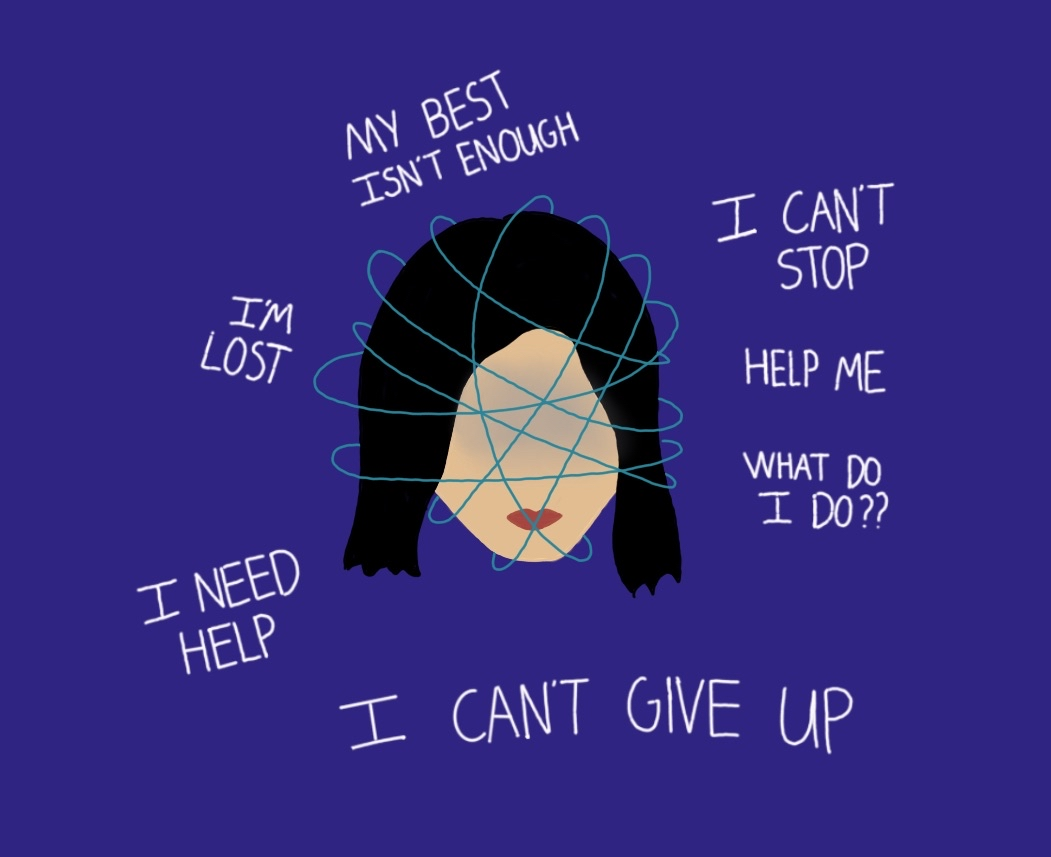
Effective on Sept. 1 students caught with a vape, under the influence of selling, gifting or delivering these substances within a 300-feet radius of any school premises will be immediately removed and placed in a Disciplinary Alternative Education Program. Gov. Greg Abbott signed House Bill 114 into law on June 13.
This new bill is the best way to keep us safe.
Vaping is detrimental for the lungs. The less you do it, the better. Studies show that e-cigarettes produce a number of dangerous chemicals including diacetyl, acrolein and formaldehyde. Diacetyl ends up ruining the small passages in your lungs. Formaldehyde is that preservative that kept your frog nice and fresh for you to dissect it. It also causes cancer. Oh and acrolein you ask. What’s that? Yeah that’s a type of weed killer. Stuff so poisonous to pesky weeds that it kills them. You want that in your lungs? You only get two of those. Any measure to discourage vaping is a measure in the right direction.
Not only does it mess with your lungs, but your brain too, creating brain fog, making it difficult for you to pay attention in class.
Studies also show that a reliance on quick dopamine fixes can have detrimental long-term effects on ruining focus and intrinsic motivation. The brain doesn’t stop growing until about 25. Nicotine also changes the way synapses are formed, which harms the parts of the brain that control attention and learning. It’s probably not the best idea to damage your brain’s learning and attention centers at the place where you are supposed to learn and pay attention.
Why ruin your grades for the quick fix? It’s not worth it.
Currently faculty periodically check the restrooms to stop students from vaping and smoking. Having a figure of authority in the restroom discourages students from vaping because of the risk of being caught.
And the risk is quite severe. The risk is being sent to a Disciplinary Alternative Education Program which is an alternative education program for students who violate the district’s Student Code of Conduct or certain other offenses like felony offense.
But DAEPs are an adequate solution. They are not meant to treat vapers as criminals but to help students. Because they have a higher teacher to student ratio, kids can get more attention in class and build more personal relationships with their teachers. With more supervision, those students who are nicotine addicts can turn a new leaf. These teachers, who are no stranger to rulebreakers, can help them.
“There have been a few cases of students who have been moved to a DAEP,” Principal Niggli said.
Now this repercussion might not be enough to stop those who are already addicted, but it can stop future potential vapers from starting because of the risk involved. If caught vaping, you are moved to an entire new school. Is losing your friends and teachers worth the small dose of dopamine?
Obviously not, which is why the bill works.
“House Bill 114 is a recent thing but vaping has gone down a lot this school year compared to last year,” Principal Michael Niggli said. “ I think the bill has helped and also the messaging around the bill itself has helped. If we didn’t get the word out to parents and students, then students might not know about it. So, we have been trying to spread the word through the e-news and the meetings that I’ve been having. And so, because of that messaging along with the bill I think that’s helped.”
If less people are vaping in the restrooms then less students would be exposed to it and thus not have access which would decrease vaping in the long run. This is a negative feedback loop and would eventually lead to almost no one vaping.
Extinguish the smoke through deterrents because obviously knowledge is not enough.
“I don’t enter the school bathrooms.”
“There’s too much smoke.”
For junior Brandon Chu, vaping has served as a deterrent against entering bathrooms. But it’s not only a matter of taking away sanitation. It serves as an indication of the far-reaching effects of vaping on our school.
On June 13, 2023, Texas Legislature passed House Bill 114 in an attempt to address this issue. It requires that a student be removed from class and placed in a disciplinary alternative education program for the possession, use or delivery of e-cigarettes within 300 feet of school ground.
It has good intentions. But bad execution.
The policy is grounded in the idea that a harsh punishment will have a deterrent effect on student misbehavior, but this is simply not true. Indeed, the numbers disprove it. Last year, we recorded a total of 99 vaping cases. However, in just a little over six weeks this year, we’ve already had 20 incidents, according to Assistant Principal Jesse Rivera. If this trend continues, we are on track to have almost 20 additional cases by the end of this year, even with the new bill.
The core issue remains that students who vape often do not believe they will be caught. This perception significantly undermines the anticipated deterrent effect intended by the bill.
They haven’t gotten caught in the past, and this bill doesn’t make it any different. Just like how Prohibition only pushed drinking “underground,” this bill similarly caused offenders to be more cautious instead of quitting.
Why?
Students often turn to vaping as an escape from the weight of their mental health struggles or as a way to conform and fit in. In these clouds of vapor, they seek solace and belonging. When forced to choose between facing a potentially severe punishment and escaping reality, many students choose the latter.
The bill only pushes students to be more discreet and careful in how, when and where they vape.
Advocates of the bill insist that sending students to DAEP will help rehabilitate them. However, disrupting education by sending them to an alternative school for 30 days isn’t the solution. According to a CSG Justice Center study, 23% of students who referred to DAEPs had future contact with the juvenile justice system, compared to just 2% of their non-disciplined peers.
It’s not hard to see why.
You take them out of the class. Put them in a restrictive environment. And somehow expect them to change.
That’s naive.
Students are escorted around, constantly monitored and forced to wear uniforms. In this stifling environment, students don’t grow, learn or change. In this stifling environment, the promise of academic progress and personal growth remains elusive. In this stifling environment, any chance of renewal is out of reach. Sending students here entraps them in a system more inclined towards entrenching their struggles than offering a chance at redemption.
DAEPs function as the critical juncture in the assembly line that transforms students into inmates.
Moreover, their academic future is hampered by the days outside the classroom. Students’ schedules must conform to the DAEP curriculum, often being forced to drop down to on-level classes or not take them at all. This is because many DAEPs rely on Apex Learning, which often deviates from traditional classroom instruction, classwork and material.
According to a study by the Intercultural Development Research Association, “the DAEP programs currently in place in the state of Texas contribute to reductions in academic achievement and increased dropout rates among students referred to these centers.”
It isn’t rocket science. If you put people in a disciplinary school where they’re treated as prisoners, they fall behind.
Furthermore, placing non-violent vaping offenders in alternative schools initially established for students who committed criminal offenses like assault and gun violations propels these individuals to negative peer groups, where they gravitate toward even worse behaviors.
By throwing vapers into DAEPs, the bill only serves to exacerbate the behavioral problems they were meant to solve.
While the bill fails at reducing vaping, there are other methods that can make progress toward putting out the smoke. To truly address the reasons why students are not scared to vape, we must look at the underlying issue that has normalized vaping.
The lack of awareness of the detrimental effects of vaping.
Rather than sending vapers to DAEPs where they never truly learn why their actions were harmful, send them to vaping education programs. Knowing that what you’re doing can lead to seizures, to heart attacks, to lung cancer is a way better deterrent than some harsh punishment.
And unlike DAEPs, these programs have proven to be effective. According to a study in the Preventative Medicine Reports, even short-term programs result in a significant change in the perception of students on the use of vapes. Instead of treating vapers as criminals, we need to recognize that they are just students who need our support.
Extinguish the smoke with knowledge, not punishment.
Your donation will support the student journalists of Bellaire High School. Your contribution will allow us to purchase equipment and cover our annual website hosting costs.












Kate Steinbach • Nov 7, 2023 at 12:22 am
Loved this story! I liked the different opinions showcased, it definitely helped me to see both points of view.
Lillian Snell • Nov 6, 2023 at 10:33 pm
While people’s negativity towards vaping can be harsh, an addiction requires more than gentle encouragement. It’s difficult to balance the fact that these are still people who are struggling and the fact that their actions have consequences of the whole school. A delicate subject handled well in this article.
Ariel Lagnado • Nov 6, 2023 at 9:52 pm
Great story! Very interesting points on both sides. Highlighting how the students are treated at DAEPs shows how they fall short in many ways to help the students in need.
Sophia Zhao • Nov 6, 2023 at 9:40 pm
Really insightful article, it opened my eyes to the effects of vaping, well-written!
Jason Deng • Nov 6, 2023 at 9:13 pm
What a great way to show both sides on this bill!
Alex Tang • Nov 6, 2023 at 9:12 pm
I agree that sending students to a prison like environment is not a solution to any problem, let alone vaping! ???????????????⁉️⁉️⁉️????????????❗️❗️❗️????️?️?️
Jason Chen • Nov 15, 2023 at 11:44 am
Interesting emojis.
Tejeshwar Jayaram • Nov 6, 2023 at 8:22 pm
Andy the goat!